fall inside a hole
Child Guidance Joy Ride Train (Late 1967)
First written April 3, 2024
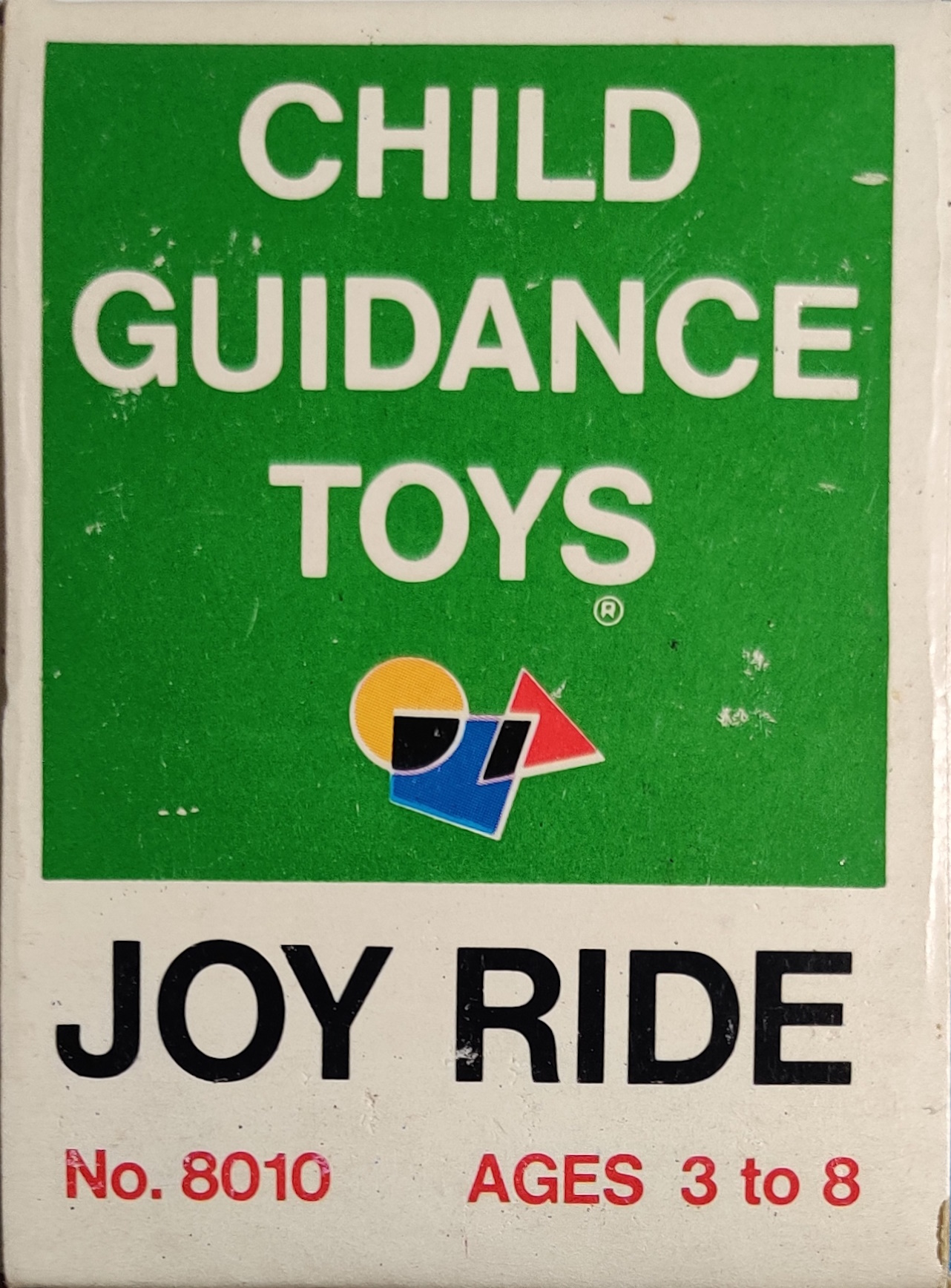


The Guild Guidance Joy Ride is the "individual" release of the Tomy-made amusement park train used in some Child Guidance sets like the Child Guidance Kiddie Land set mentioned on the top of the box as well as a series of Plarail "Yuuenchi" amusement park sets and accessories. The Joy Ride was first released in the Kiddie Land set in late 1967. The individual release has the catalogue number 8010 - the Kiddie Land set is number 8000. The side of the box shows early versions of the train and cars with an earlier coupling system based on the plastic couplings of later examples of Plarail push trains from the later 1960s, but the final coupling system resembles slightly newer Plarail couplings from the late 1960s.

In addition to being used in the Kiddie Land set in both the U.K. and U.S., the engine itself was also used in a few Runaway Loco-type sets. This individual release was also shown on Child Guidance order forms as an individually purchasable item, which I think is one way to get this "individual" style boxed release.
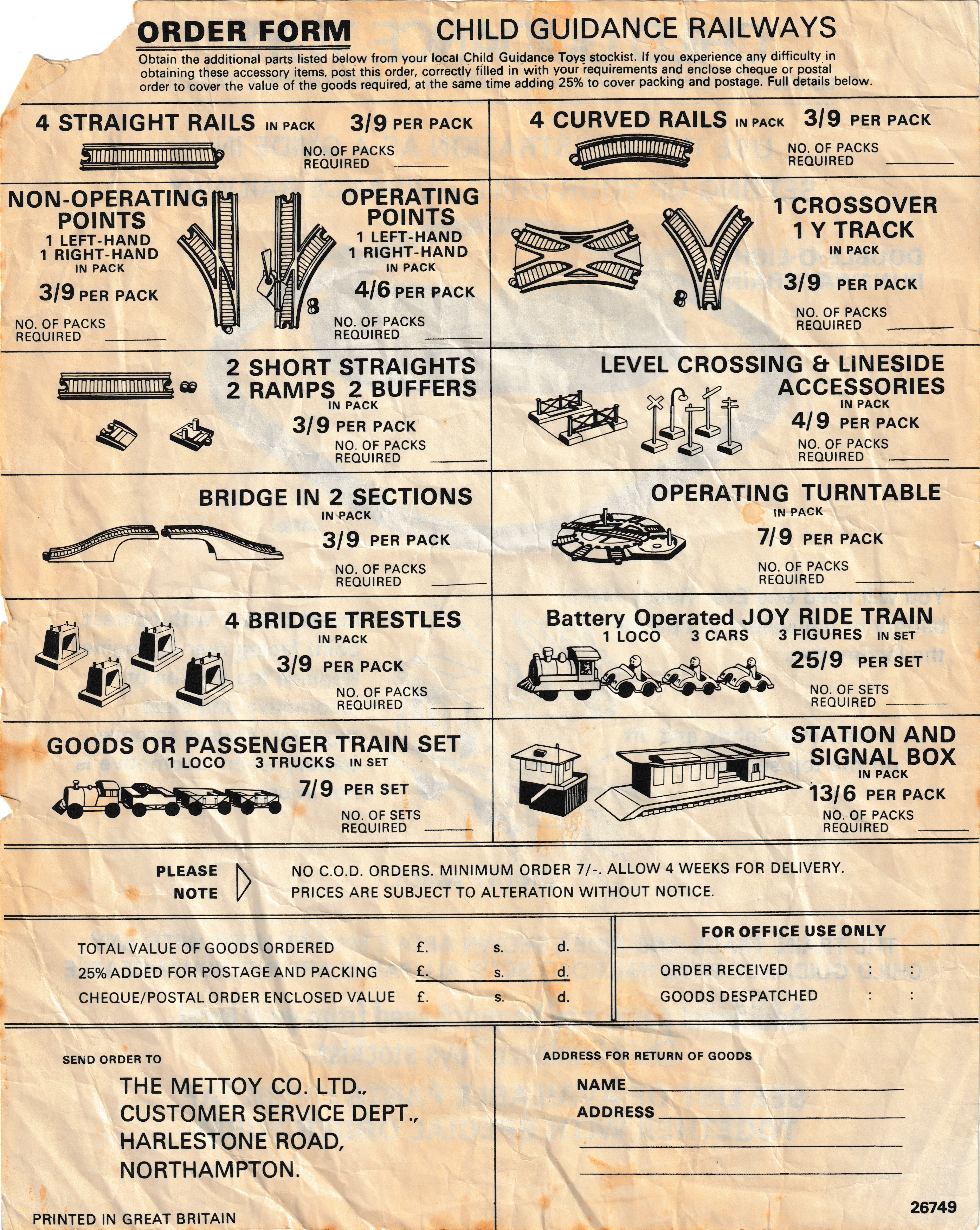
The Joy Ride train shown with box here comes from a Sears Coast to Coast Motorized Railroad set. Being a larger set for a specific retailer, it could be that Child Guidance did not want to develop a large foam insert to fit the train and many, many other components and instead included a regular boxed train in with more loosely packed accessories.
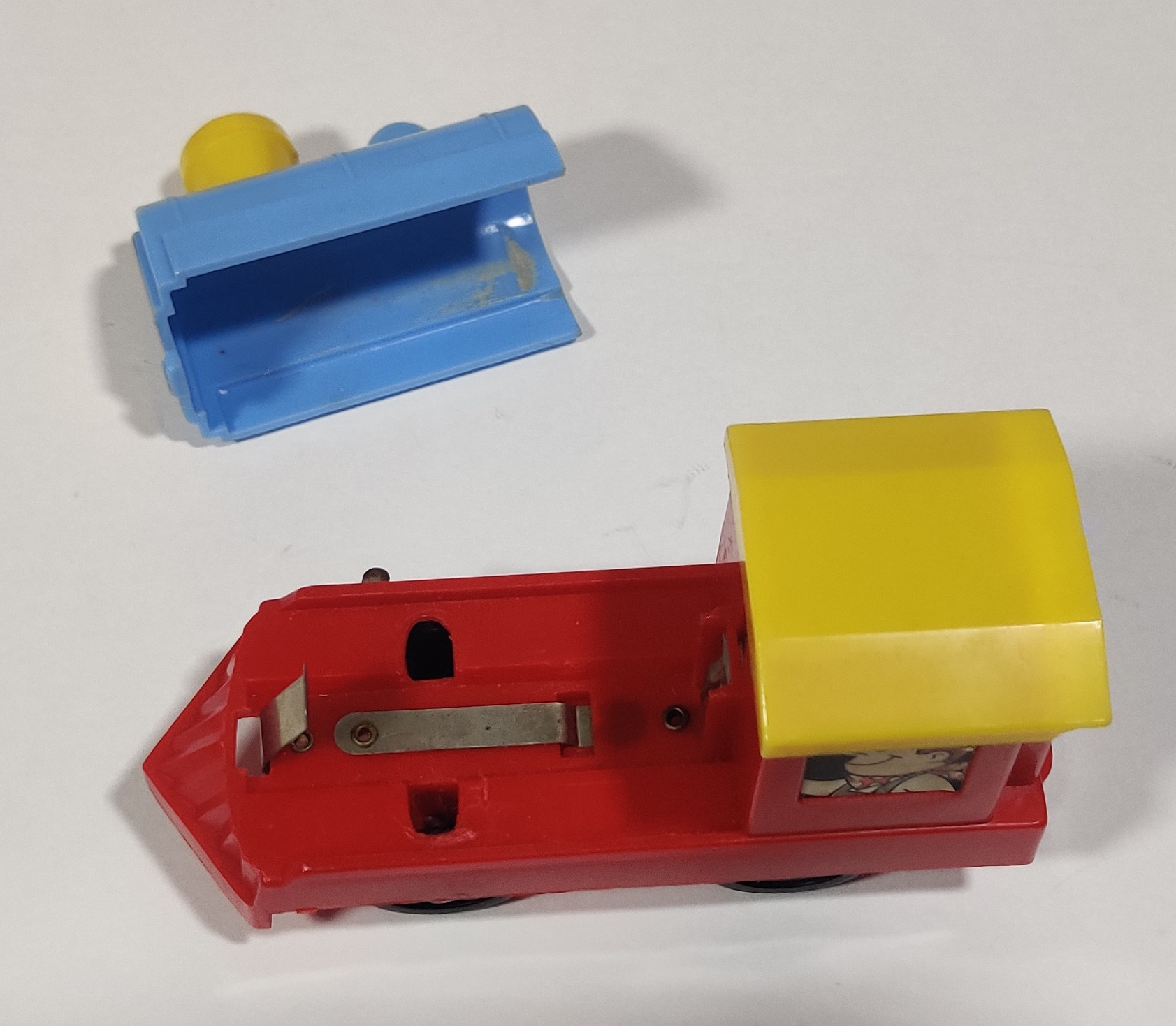
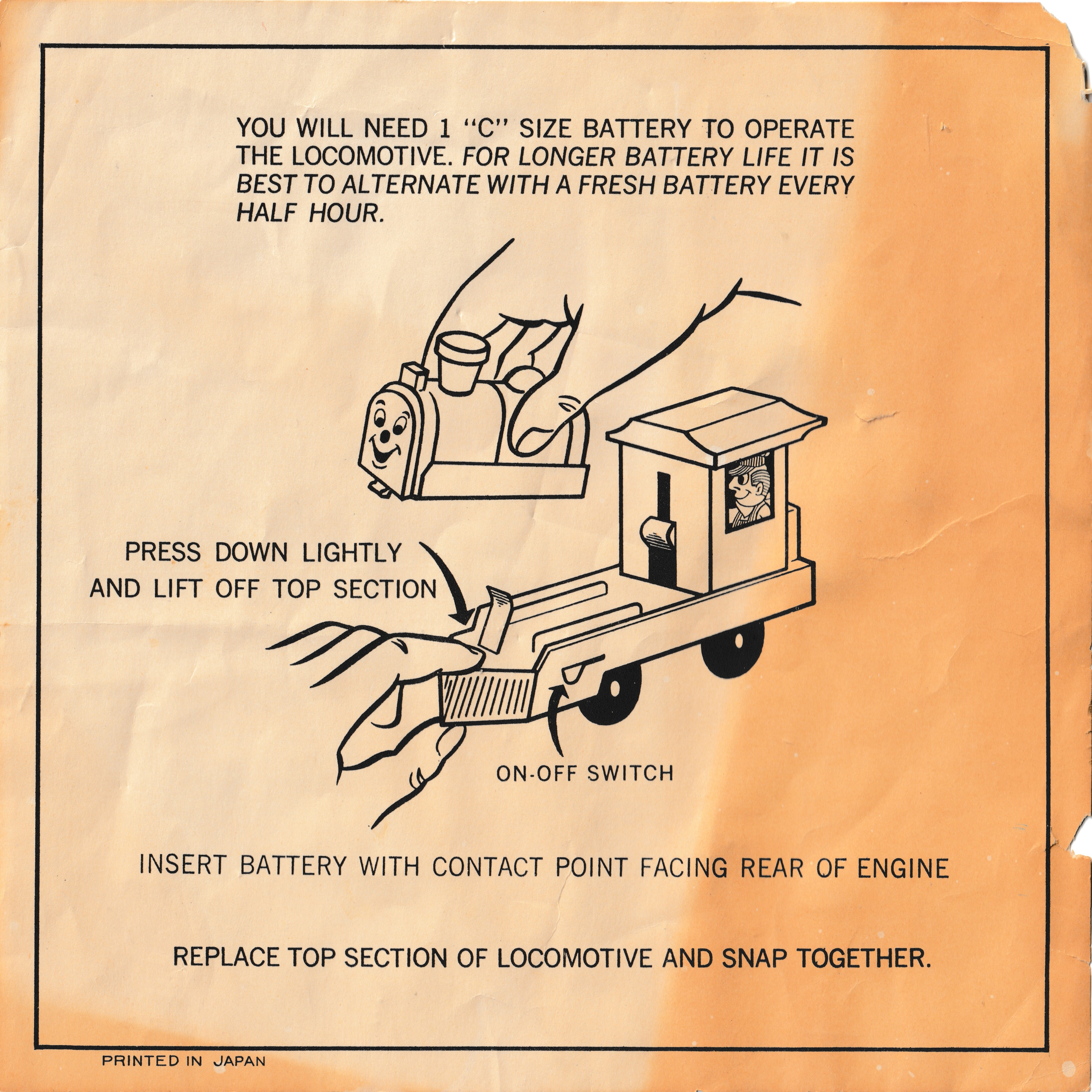
The blue boiler of the locomotive comes off to reveal a spot for a C battery. The motor and friction-drive gearbox for these trains is encased within the cab. These trains are fairly fragile and the gearboxes often do not work right away. I have a repair page here detailing some of the repairs I have had to make to these trains in the past.
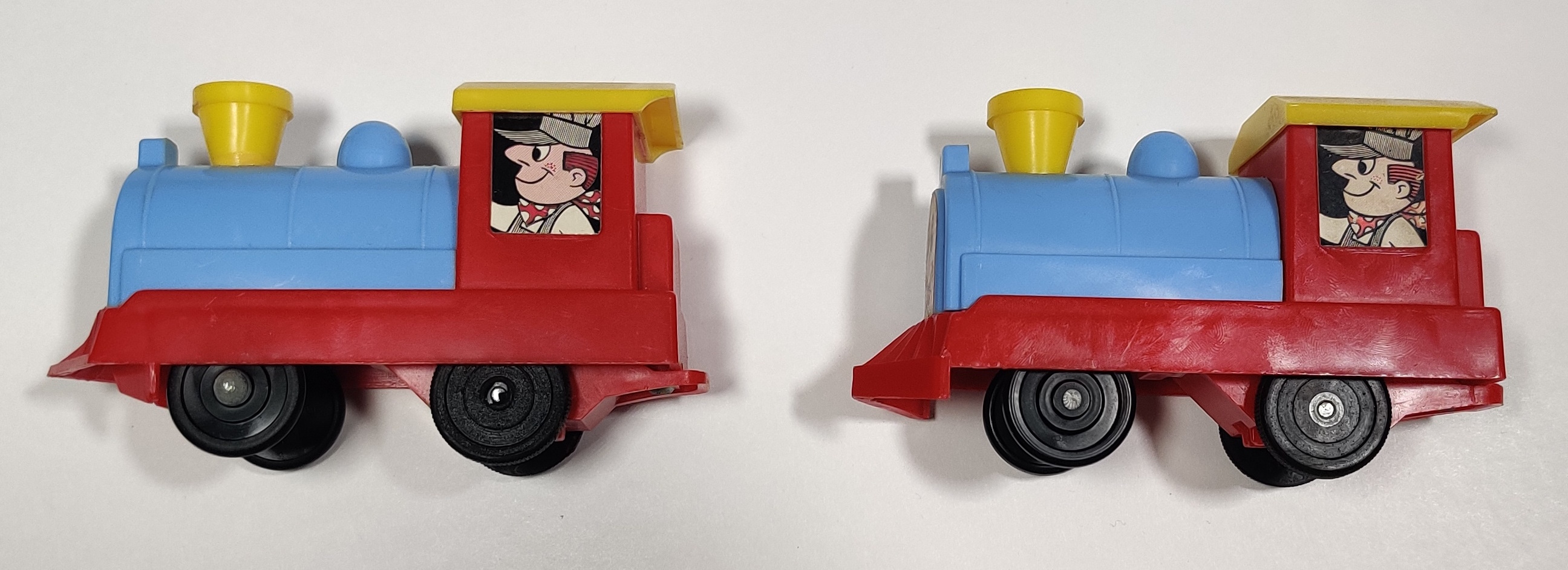
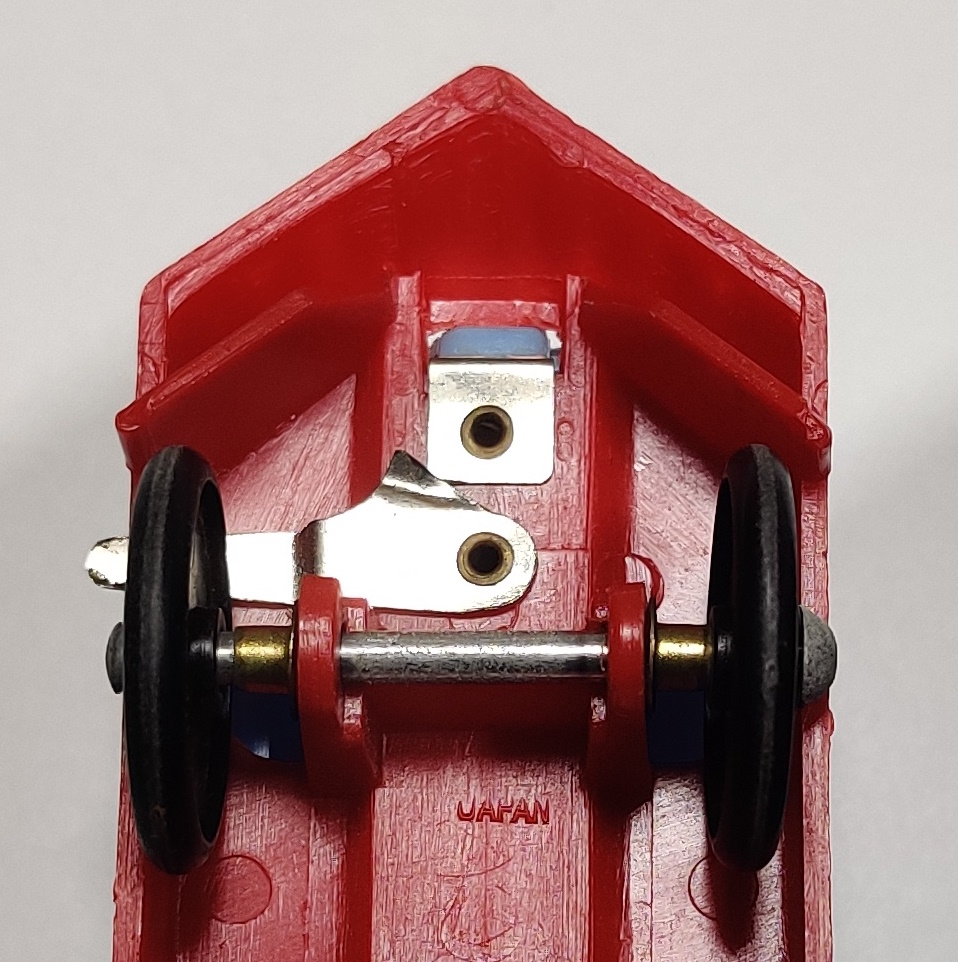
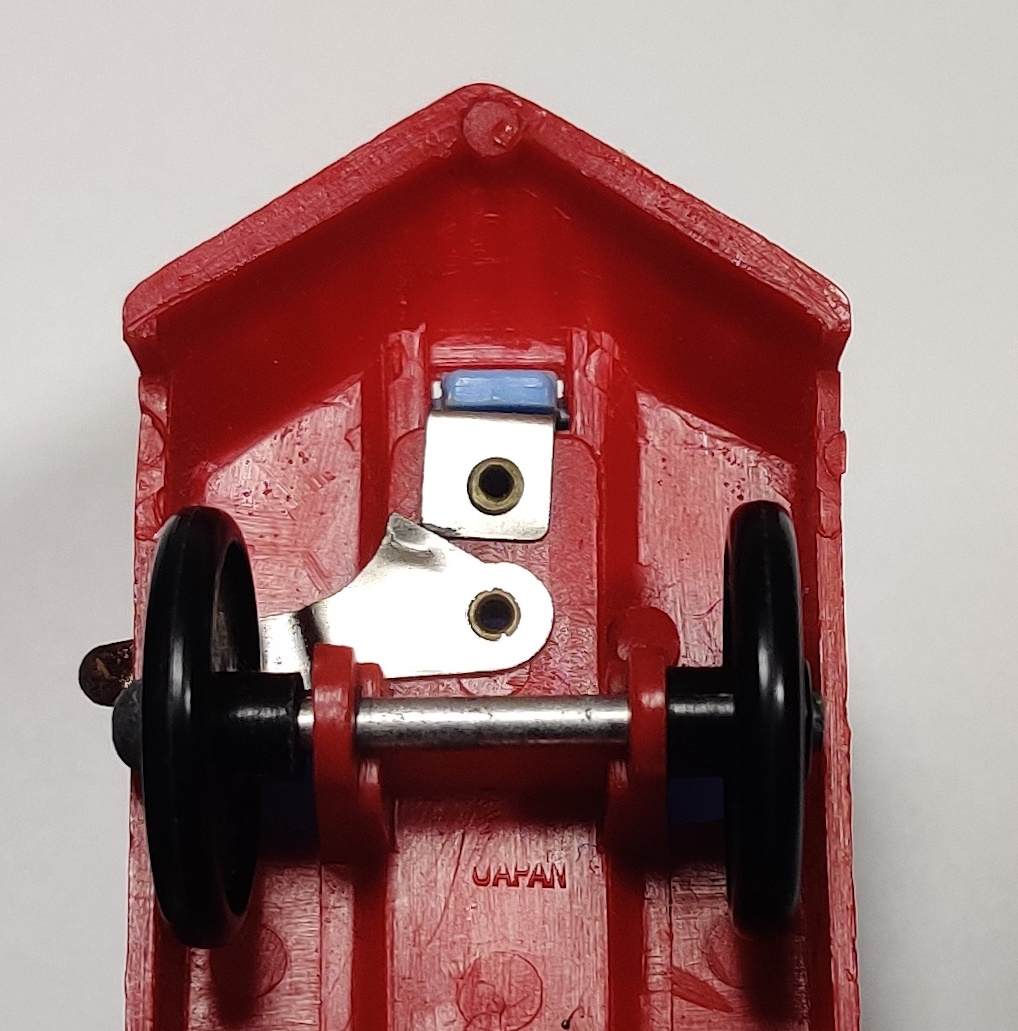
The locomotive in this box is actually a slight variation I had not seen from the other set Joy Ride trains I own. It has two fins behind a shorter cowcatcher on the front of the locomotive and has a slightly different front axle arrangement with bushings. Seemingly this is an older design with the wheel tooling updated to eliminate the need for separate brass bushings and the fin reworked into a larger cowcatcher to work better with the double-o-eight sections, I can only assume.
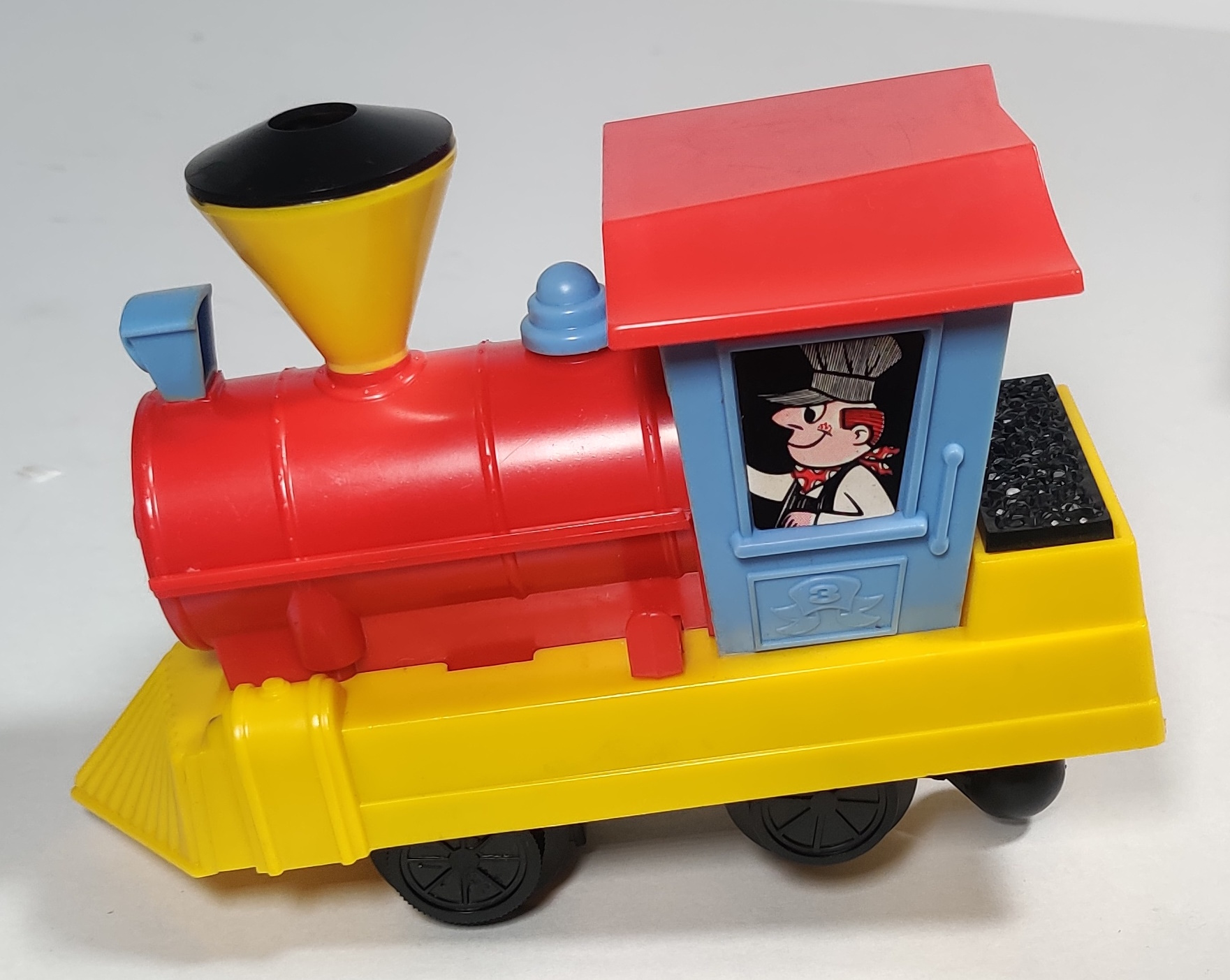
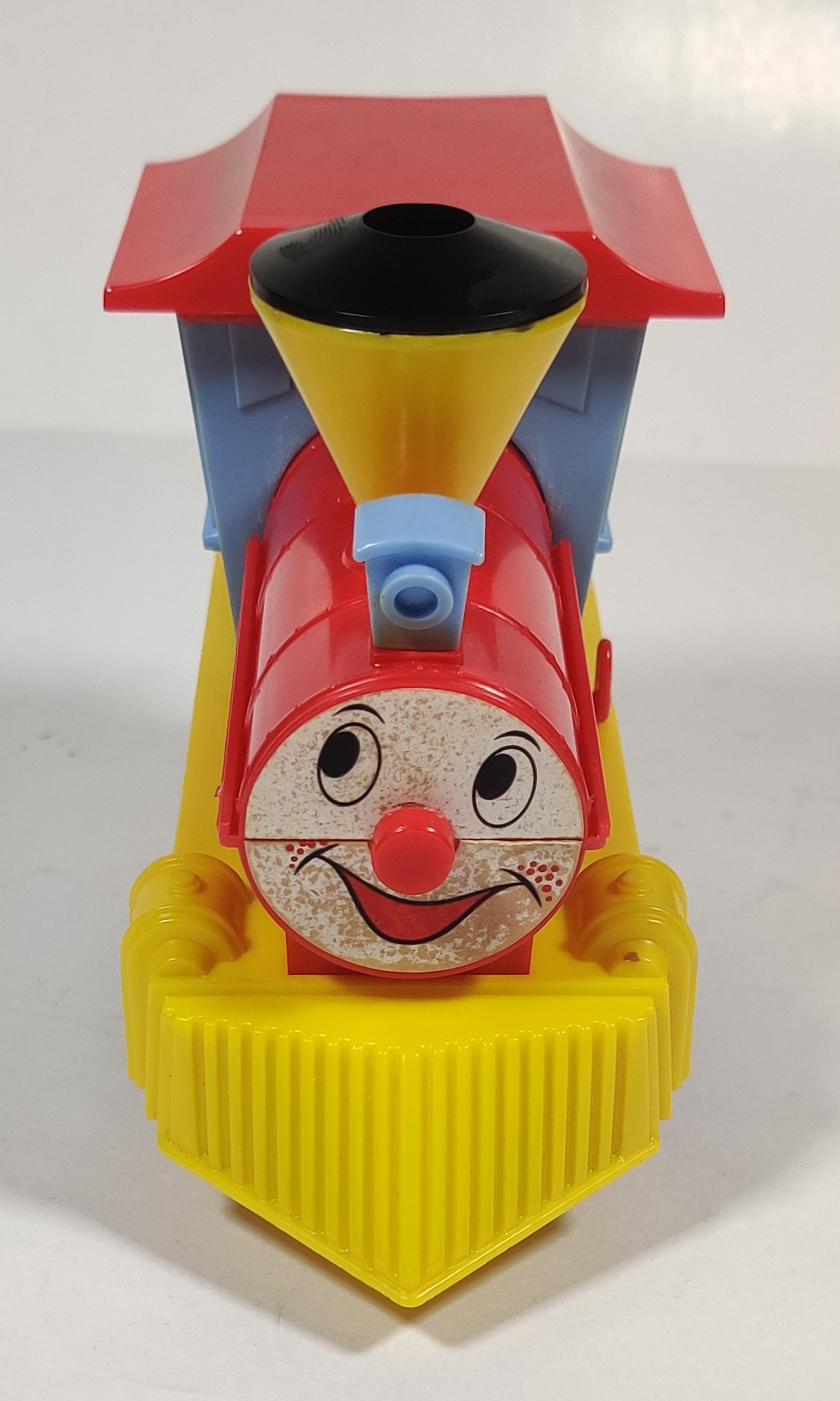
The design of this locomotive seems to originate from the previous Child Guidance Musical Railroad toy, which had a larger steam locomotive of a similar design that traveled around a circle of track with a hammer hanging beneath its drive unit that would strike tuned metal "notes" that could be placed in-between the rail's sleepers like a sort of xylophone. The Musical Railroad train seems to have been produced in several variations of cycling red, blue, and yellow around between the running board and chassis, boiler and cab roof, and cab. The exact color combination of the smaller Plarail-scale locomotive does not exist in the larger train as its cab and running board are two separate and seemingly always unmatched pieces, but I think the chosen color combination is probably the nicest one they could have selected. The design and color palette of the locomotives are very similar, and the driver sticker appears to be a scaled down crop of the larger locomotive's driver sticker. Perhaps it is the influence of too much Plarail Thomas, but I think the red running board looks better than a yellow or blue one would. Sources seems to disagree on when exactly this toy was in production, with some saying that it was first released in the 1950s which feels a little bit early to me and others saying it was last on sale in 1968 despite appearing in the 1970 Sears Wishbook. The set has also been reproduced (apparently from the original toolings) in fairly modern times by American Classic Toy. One year I have seen a few times is 1963, which seems fairly reasonable as an initial release year. The patent for the toy dates to 1966, which is still before the Joy Ride Train.
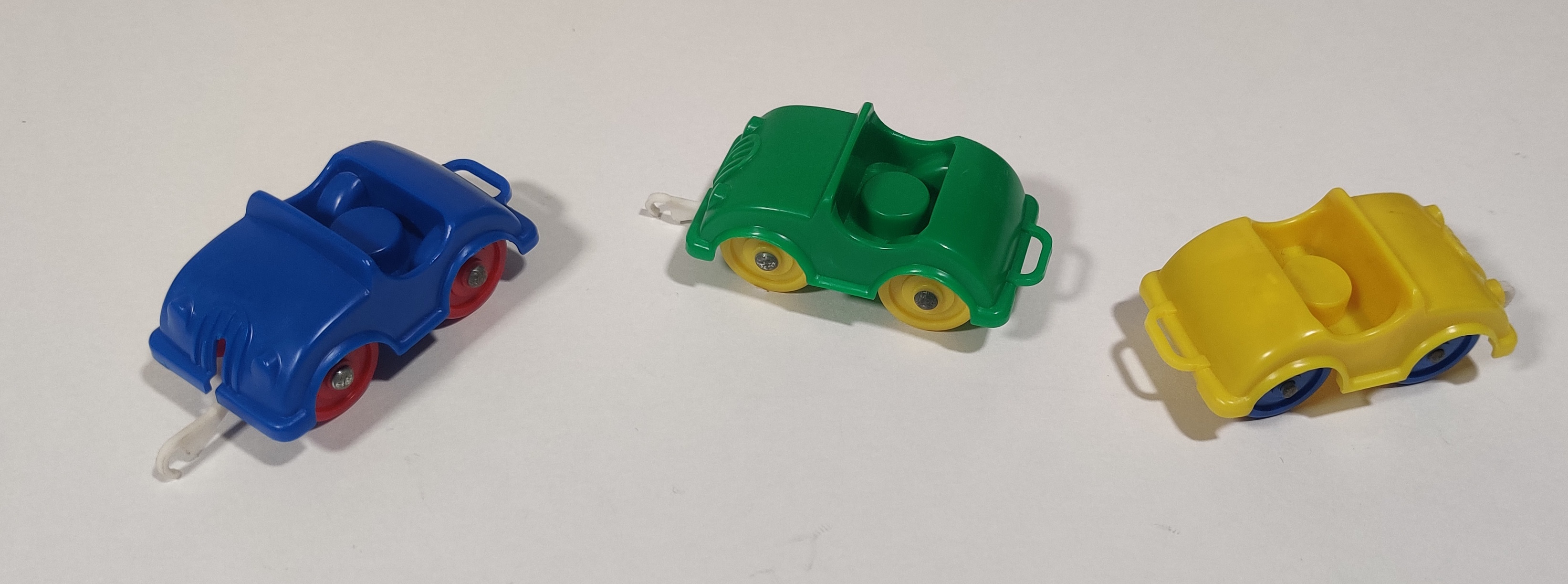
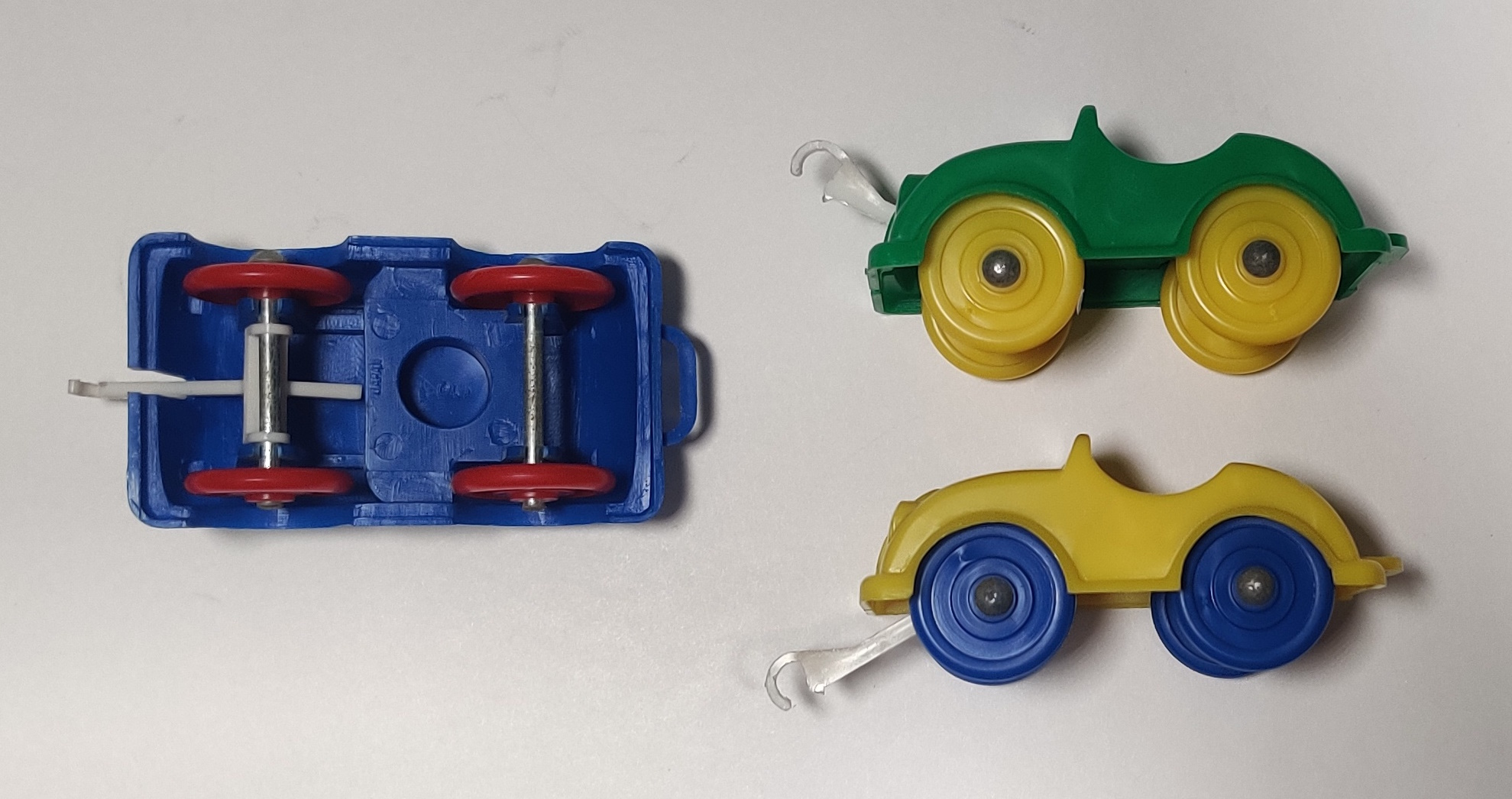
The cars have a coupling system somewhat similar to Plarail of the time. It has a wide range of motion and resembles the Child Guidance Shuttle Train coupling system.

The small dolls are made in Japan along with the rest of the train and can sit in the cars. The red figure has a bow in its hair. The Joy Ride and Kiddie Land box art shows earlier versions of these figures with slightly different faces, as well as showing the yellow figure with a red bow in its hair. These figures vaguely resemble Tomy's later rolling figures for Plarail Land sets.
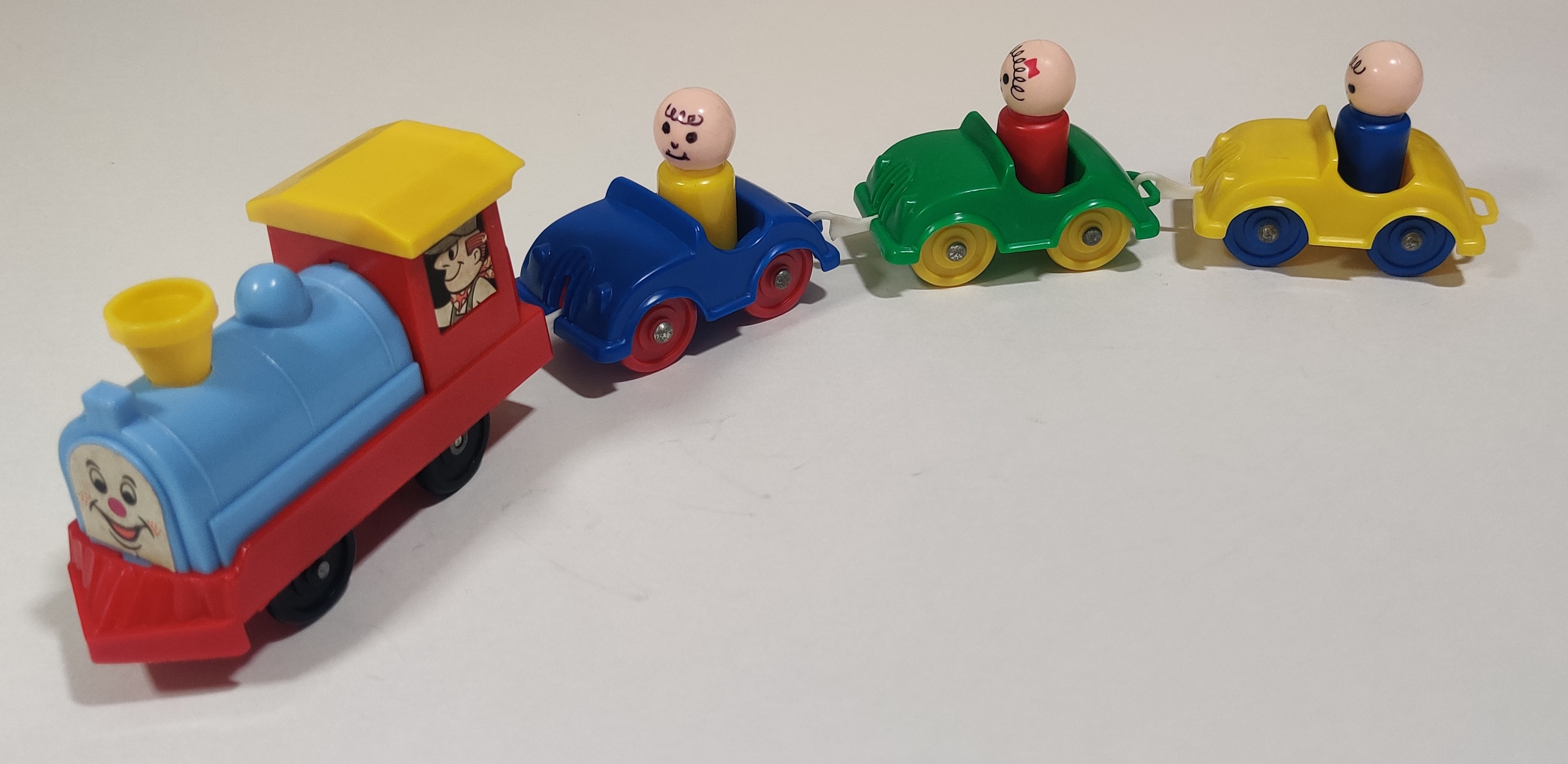
Joy Ride locomotives and cars were released in Japan as part of the ゆうえんちシリーズ (Yuuenchi or Amusement Park Series) alongside some sets and individual accessories of the amusement park rides featured in the Child Guidance Kiddie Land set. These Japanese-issues trains used a different gearbox and power switch design. Later, around 1973, a Disney-themed version of the amusement part series used the export style of Joy Ride Train gearbox and switch in new colors.
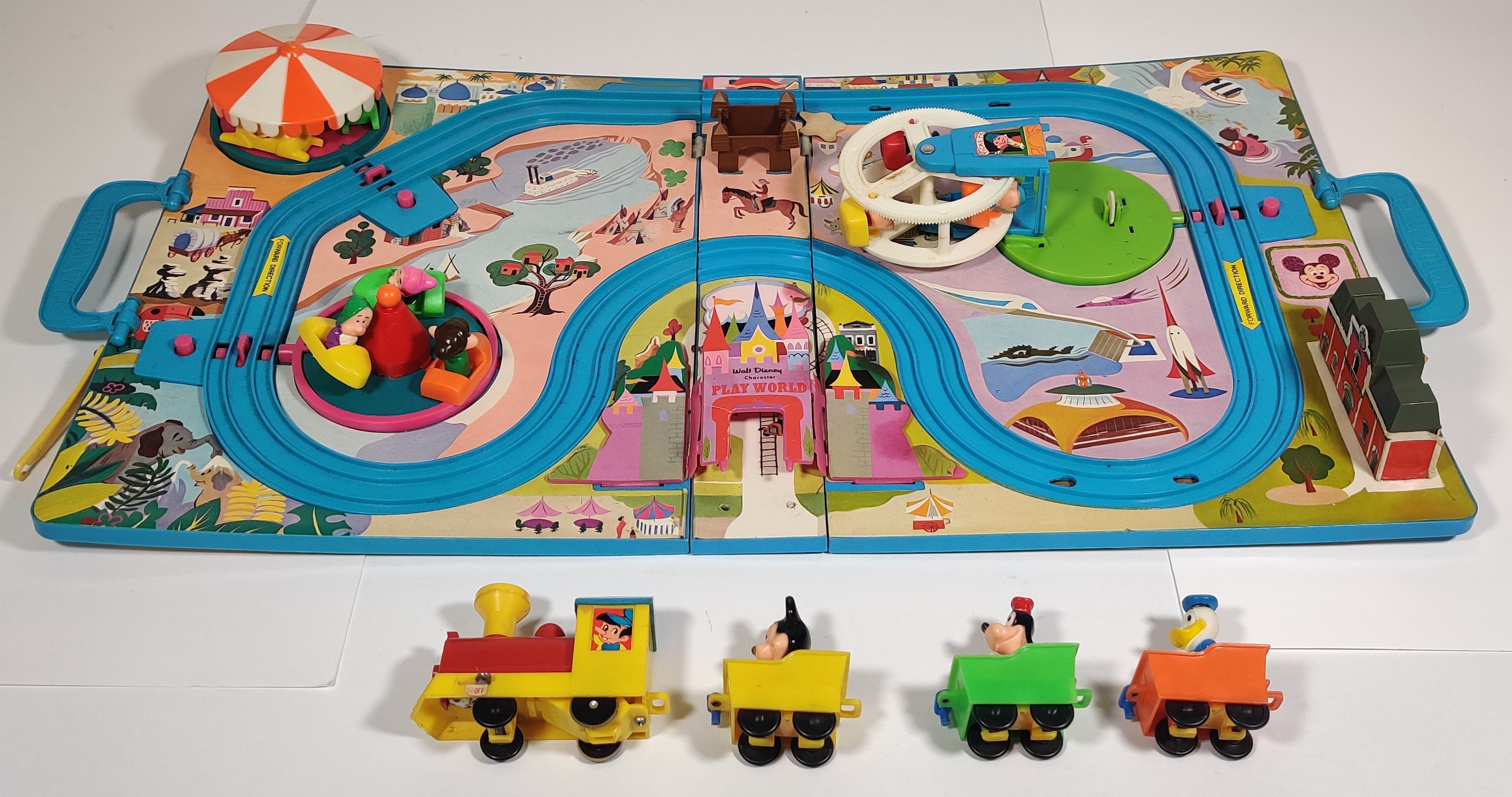
Seemingly independently, the Kiddie Land concept morphed into a separate Disney set around 1972, the Walt Disney Character Play World, which featured a very similar locomotive carrying Disney characters in three cars around a Disney World playboard with similar attractions and mechanisms.